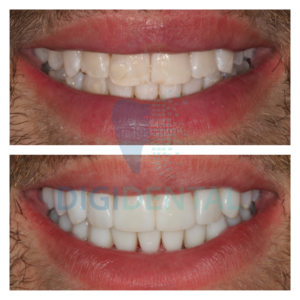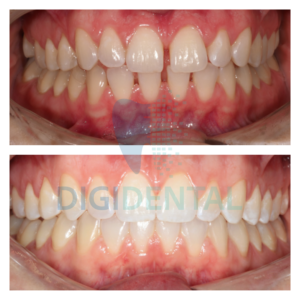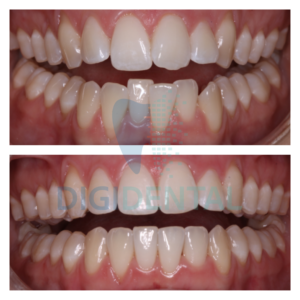Root Canal Treatment - Bentleigh Dental Care
Are you seeking to Revitalize Your Gums and make it healthy?
How long does root canal treatment take to complete?
Root Canal Treatment - Bentleigh Dental
Are you seeking to Revitalize Your Gums and make it healthy?
How long does root canal treatment take to complete?
Preserve Your Smile, Choose Root Canal
A lot of our patients worry that root canals might hurt. At Bentleigh Dental Care, we focus on keeping you comfortable during your treatment. We use a local anesthetic, so getting a root canal feels similar to having a regular root canal filling done. Our dentists are very caring and make sure to pay close attention. If you ever feel uncomfortable at any point during the treatment, they will stop and help you feel at ease.
Book a Free Consultation
At Bentleigh Dental Care, we focus on giving you the best dental care possible. We believe it’s important for you to make informed decisions about your root canal treatment. That’s why we offer a free consultation to discuss your treatment options. Book your appointment today!
Why Choose Bentleigh Dental Care?
We care about your oral hygiene & health.

Experience
& Experties
With 20+ years of experience, we are committed to providing our clients with the best clinical treatment. Our dentists hold immense knowledge and expertise in general, implant and cosmetic dentistry, ensuring exceptional care and outstanding results for every patient.

Accreditation
Our dental treatments are accredited by the National Safety and Quality Health Service Standards (NSQHS) which is also a part of Quality Innovation Performance (QIP) Limited Private dental practice accreditation. That’s our seal of trust!

Latest
Equipment
We use the best technology and equipment for our patients’ dental treatment. We understand the concerns of our patients and deliver the finest of what they are expecting at Bentleigh Dental Care. As per the market trend, we keep on upgrading our practises & equipment.

Impeccable
Patient Care
Your comfort and well-being are our top priority. We understand that dental treatment can feel confusing and scary, so we’re dedicated to making every visit as easy, stress-free, and comfortable as possible for you.

Flexible
Payment
Enjoy personal growth and empowerment with our easy, interest-free payment plan. Setting up a plan is simple, and our friendly team is here to help whenever you need it. Take the first step toward a better you today! We even accept insurance.
Dental Treatments at Bentleigh Dental
Chatswood's Trusted Dental Practice
What is a Root Canal?
A root canal treatment is a dental procedure that helps save a tooth when it’s badly damaged or infected. Inside your tooth, there’s a soft tissue called pulp, which contains nerves and blood vessels. If the pulp gets infected because of the deep cavity or an injury, it can cause a lot of pain and swelling.
During a root canal filling, our dentist removes the infected pulp, cleans the inside of the tooth, and seals it to prevent more problems. This helps keep your natural tooth instead of pulling it out.
It is one of the most common and best ways to stop pain and protect your smile.
When to Consider for Root Canal Treatment?
If you’re suffering from a toothache, it could be a sign you need root canal surgery, but not every toothache means that. Check out some of the warning signs mentioned below:
- A visible hole, crack, or chip in your tooth.
- Pain that feels intense or doesn’t go away.
- Trouble chewing because of sharp pain in the tooth.
- Trouble chewing because of sharp pain in the tooth.
- Swelling or tenderness around the infected tooth.
- A bump or pimple near the tooth could mean an abscess.
Extreme sensitivity to hot or cold foods. - The tooth appears darker or has an unusual colour.
If you think you might need a root canal extraction, our dentists at Bentleigh Dental Care can check your tooth and let you know. Root canals are common for people of all ages, and we always make sure the treatment suits your needs.
Benefits of Root Canal Surgery
- Pain Relief: A root canal eases severe tooth pain caused by infection or decay.
- Saves Your Tooth: It preserves your natural tooth, avoiding the need for root canal extraction.
- Prevents Infection Spread: Stops the infection from reaching other teeth or parts of the body.
- Improves Chewing: Restores your tooth’s function from reaching other teeth or parts of the mouth.
- Enhances Appearance: Crowns used after root canals make teeth look natural and healthy.
- Long-Lasting Solution: Proper care after a root canal can make the tooth last for years.
Why to Consider RCT Treatment?
Root Canal Treatment (RCT Treatment) is a great option to save a damaged or decayed tooth instead of removing it. It helps fix problems deep inside the tooth, like when the soft tissue (called the pulp) gets infected or inflamed. Here’s why you should consider it:
- Stops Pain: RCT relieves severe tooth pain and sensitivity.
- Saves Your Tooth: It prevents tooth loss and keeps your smile intact.
- Prevents Infection Spread: It stops infections from reaching other teeth or gums.
- Strong and Long-lasting: A root canal filling makes the tooth strong and durable.
Choosing RCT treatment keeps your natural tooth healthy and functional for years!
Patient Stories
EXCELLENTTrustindex verifies that the original source of the review is Google. Dr Dolly and her team at Bentleigh are very efficient and friendly, always a pleasure coming here for my dental appointments.Trustindex verifies that the original source of the review is Google. Very disappointing experience. What started as a routine cleaning turned into a painful and expensive root canal. During the cleaning, a young female dentist suggested I get a cavity filled. Unfortunately, she drilled too deep into one of the teeth, and the next few days, the filling collapsed into the pulp, causing intense pain. I had to go to a different clinic for a root canal, which ended up costing me $3,500. This experience made me seriously question the professionalism and responsibility of this clinic. I won’t be returning, and I wouldn’t recommend it to others.Trustindex verifies that the original source of the review is Google. Very amazing services, Dr.Dolly is very kind and explains all the process very nicely and friendly. The staff is very supportive as well.Trustindex verifies that the original source of the review is Google. Dr. Dolly and her team are excellent! They always make sure I’m comfortable and are very friendly. Great dental team!Trustindex verifies that the original source of the review is Google. I had a great experience with Dr. Dolly Soni. she consistently makes sure I am comfortable during appointments. The office is clean and well-organized, and the staff is friendly and professional. Dr. Soni takes the time to explain procedures thoroughly and answer any questions I have, which made me feel comfortable . Overall, I highly recommend Dr. Dolly SoniTrustindex verifies that the original source of the review is Google. Friendly staff. Experienced and patient friendly Dr. Dolly.Trustindex verifies that the original source of the review is Google. I had teeth whitening done with Dr.Dolly Soni and it’s was amazing and very efficient results! They also do take home whitening kit and have got my regular checks as well. Dr Soni and her team makes are very efficient and makes sure to keep a friendly healthy and very comfortable environment . I highly recommend Dr Dolly Soni at Bentleigh Dental Care . Thanks for your care . Cheers!Trustindex verifies that the original source of the review is Google. My honest opinion with Dr Dolly is that i’ve had the most genuine experience with her. Not as a dentist, but as a human being, she is the most welcoming & humble person ever. She is caring, always tries her best to offer best option for patients. Instead of overly charing or offering additional treatment, she is the type of person who would literally recommend you with the most ideal treatment needed. I thank you again Dr Dolly for everything and God Bless you 😊🙏🏻Trustindex verifies that the original source of the review is Google. A friend recommended me to come here for dental care. I had two wisdom teeth extracted, and Dr. Dolly, who performed the procedure, is incredibly experienced. She's skillful, and her demeanor remains remarkably calm. Extracting wisdom teeth is not an easy task, but she did it effortlessly. It took barely any time, and I hardly felt a thing – it was done! Her dental skills are truly exceptional!! Now our whole family comes here for dental care. The staff is wonderful, and we really love it here. My husband even had two teeth implants done here last year. The prices are also more reasonable compared to other places. We feel very fortunate to have found such an excellent dentist Dr.Dolly!
Smile Gallery




Our Affliliates






















